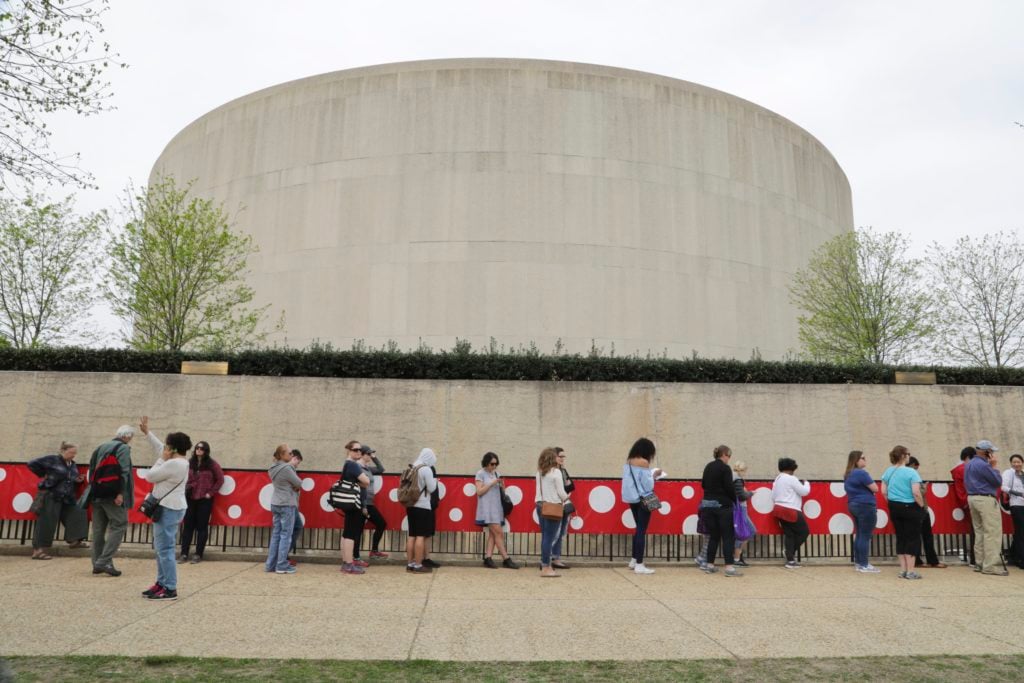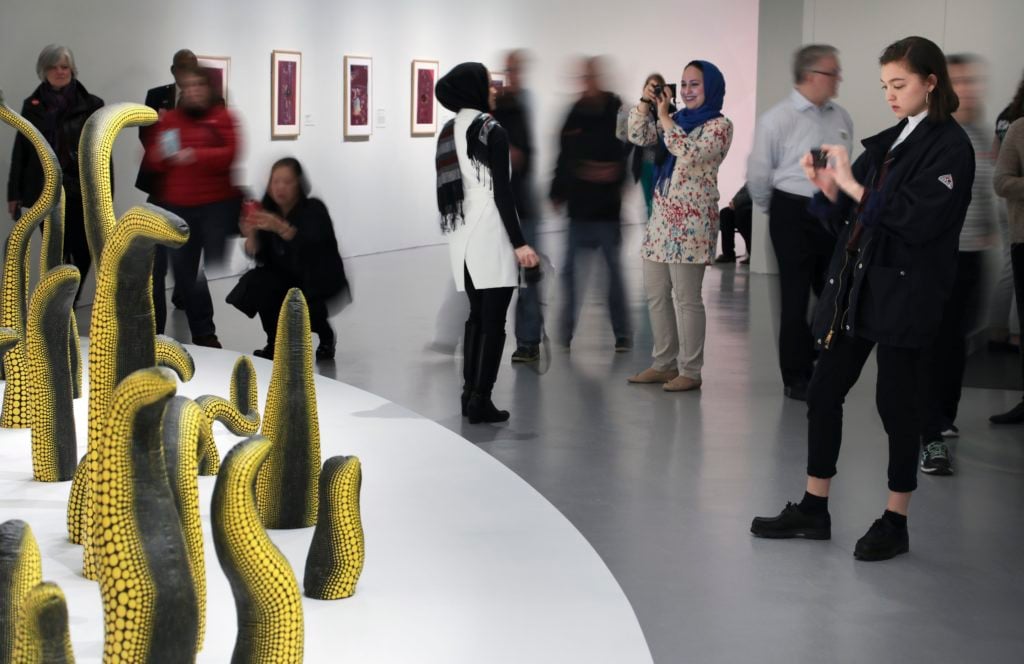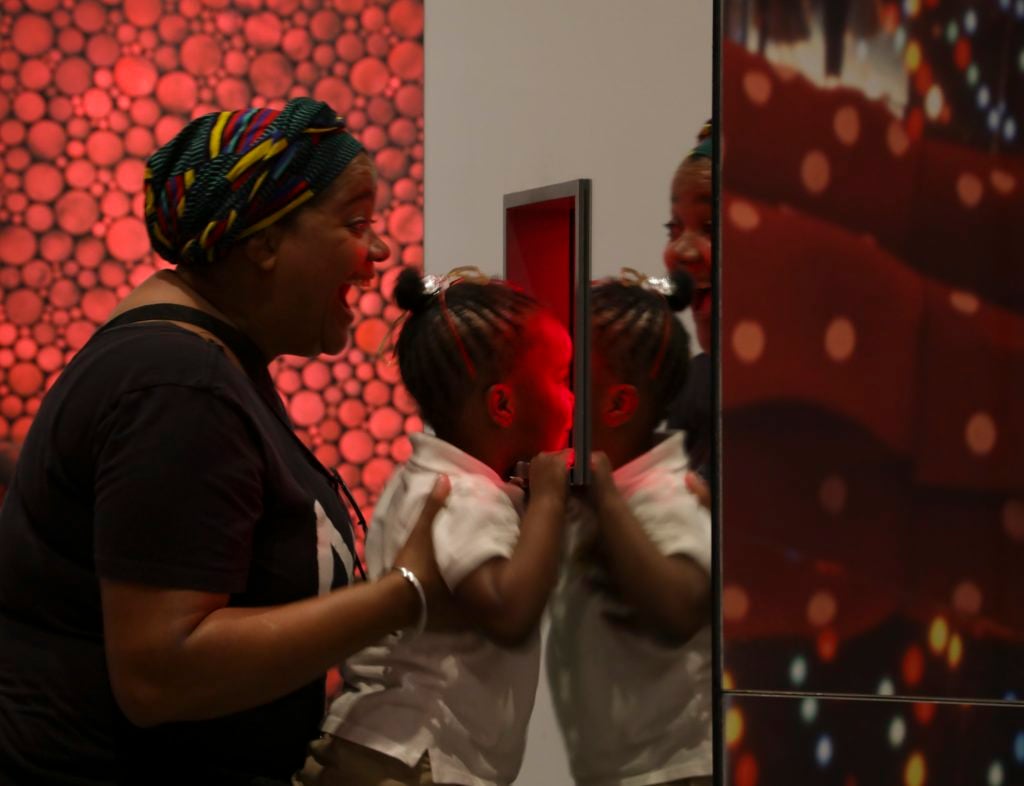Art & Exhibitions
Thanks to Kusama, the Hirshhorn Welcomes Its One Millionth Visitor This Year
The lucky museumgoer received a complimentary membership—and cake!

The lucky museumgoer received a complimentary membership—and cake!

Sarah Cascone

The one millionth visitor crossed the threshold of the Hirshhorn Museum and Sculpture Garden in Washington, DC, today, hitting a high-water mark for annual attendance that hasn’t been matched by the institution in nearly 30 years. Getting the lion’s share of the credit, of course, is the blockbuster hit “Yayoi Kusama: Infinity Mirrors,” organized by the museum and now on an extended North American tour.
The Hirshhorn’s director Melissa Chiu told artnet News that 2017 has seen nearly double the average annual attendance of her three-year tenure.
Should last year’s figures hold, the Hirshhorn would rank third in attendance among Modern and contemporary art museums in the US, according to the Art Newspaper‘s annual museum attendance survey. Leading the pack in 2016 was New York’s Museum of Modern Art, with 2.7 million visitors, and the Whitney Museum of American Art, with 1.1 million. “We’re pretty excited,” Chiu says.
At the Hirshhorn, lucky number one million was presented with a yearlong membership to the museum, as well as a gift bag full of artist-designed crafts. The ensuing festivities included a cake modeled after the museum from local pastry shop Buttercream Bakeshop. (Mercifully for the bakers, the museum is circle-shaped.)

Hirshhorn visitors photograph Kusama’s work (2017). Photo by Cathy Carver. Courtesy of the Smithsonian.
In 1988, when the Hirshhorn last saw one million visitors, its exhibitions included a high-profile loan show of Russian and Soviet paintings from the State Tretyakov Gallery in Moscow and the State Russian Museum in Leningrad, as well as solo exhibitions of work by Alberto Giacometti, Sherrie Levine, and Sol LeWitt.
Today, the recipe for an audience hit is a bit different. Chiu notes that Instagram helped lure visitors who might not otherwise have followed the Hirshhorn’s program. “The exhibition is introducing her work to a whole new generation of visitors, and social media has really allowed for the exponential sharing of that show, which has had a big impact.” No fewer than 475,000 people stopped by the museum during the Kusama show’s run—the most spring visitors in the institution’s history.
While Chiu acknowledges that Kusama was “the tipping point” in terms of attendance numbers, she cites other factors as well, including a pop-up cafe, 120 new museum guides and visitor ambassadors, and an increased social media presence. Indeed, of those one million guests, only 160,000 were able to see the Kusama show, which strictly limited the number of daily visitors.

Hirshhorn Museum visitors admire Kusama’s work (2017). Photo by Cathy Carver. Courtesy of the Smithsonian.
Chiu is also looking out for a Kusama ripple effect. The popularity of the traveling exhibition is “building the Hirshhorn’s reputation across the country,” she says. The list of institutions that sought to present the show was long—Chiu says it “probably could have been on tour for years” were it not for the limitations on loans and the costs and labor associated with sending an exhibition of its size on the road.
Kusama will undoubtedly be a tough act to follow—but the museum is eager to rise to the challenge. On November 8, the Hirshhorn will open “Mark Bradford: Pickett’s Charge,” a new site-specific painting commissioned from the US representative at this year’s Venice Biennale.
“Yes, I think that this growth in attendance is thanks to the Kusama show,” Chiu says, “but it’s also because people are trying to make sense of the world. One way of doing that is to look to what artists are creating and saying today.”